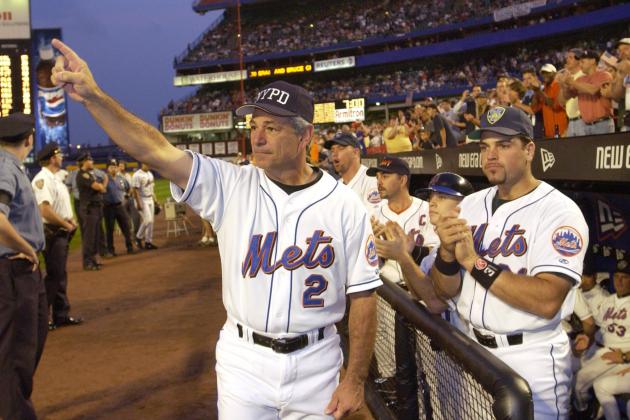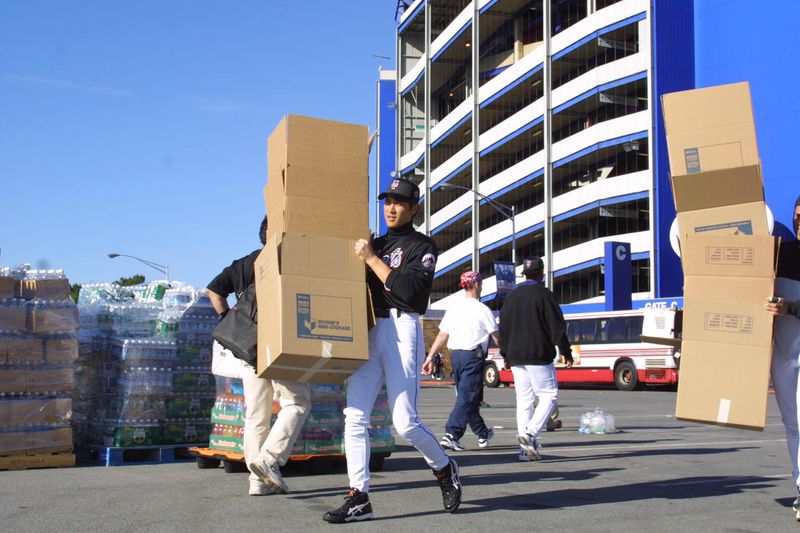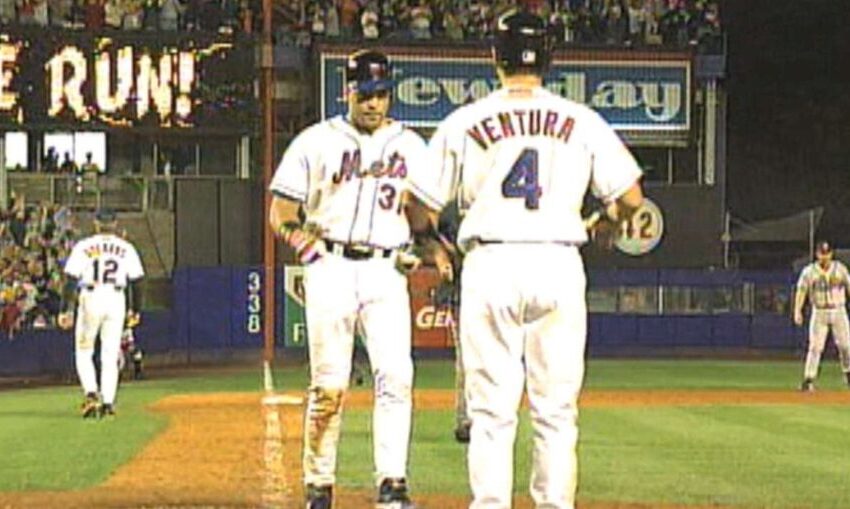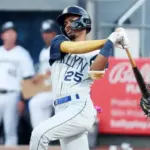
Twenty-one years. It’s been 21 years since the horrible events that took place in New York City, Washington D.C. and Shanksville, Pa. In a matter of hours, 2,977 people died and the world as we know it changed forever. Of the nearly 3,000 victims, 2,753 died when the North and South towers of the World Trade Center were struck by planes, and ultimately collapsed. New York came to a near stand-still.
The sports world also stopped cold. Baseball Commissioner Bud Selig cancelled games initially for one day, then three, and finally five days, cancelling all games through September 16. The New York Mets were in Pittsburgh during the attacks. But during the difficult weeks that followed, the Mets franchise showed its true colors by aiding in any way possible the stricken city of New York.
The Mets took a bus from Pittsburgh back to New York, and as many players recall, it was a near silent ride. As the bus crossed over the George Washington Bridge, players and coaches alike, peered downtown through the right-side windows, stunned by the black cloud rising from the starkly illuminated Ground Zero. It was a helpless feeling, soon replaced by the need to do something, anything — and to do it now. They did.
“We as a team, as an organization, were committed to help,” recalls John Franco as he told the NY Daily News. “There wasn’t a guy who wanted to run home. We unloaded trailers, boxed up work boots, water bottles, batteries. If we could have stayed all night, we would have.”

Photo Credit: Marc Levine of the NY Daily News
The first act that transcended baseball during the time just after the attacks was the fact that Shea Stadium was one of the areas chosen to act as a staging area for the Ground Zero recovery and cleanup. Cots were set up in the stadium tunnels for police officers, firefighters, and rescue workers to rest between their shifts. Bobby Valentine, John Franco, and other Mets offered their support in unloading supply trucks and bolstering the morale. Some players even ventured to Ground Zero and helped out in whatever way they could.
It was a total team effort, with nearly every player involved . Future Hall of Famer Mike Piazza toted boxes to waiting trucks alongside Japanese-born outfielder Tsuyoshi Shinjo. Utility man Joe McEwing drove a forklift, while Toms River, NJ native Al Leiter emptied incoming 18-wheelers packed with donated items.
“A goose bump moment, the first time they came out of the stadium together,”recalled Valentine to the Daily News, still proud of his team 19 years later. “They spent hours away from their families, precious time when people were still wondering what might happen next.”
Talk about Amazin’.
Baseball became secondary to a large number (if not all the Mets) as they saw first-hand the scope of the disaster. But baseball did resume fairly quickly with the Mets scheduled to play a home series against the Pirates. For safety concerns, the series was moved to Pittsburgh. Somehow, the Mets, with their minds squarely focused 317 miles to the east, swept the Bucs. Their next win would be much more special.
Shea Stadium hosted the first professional sporting event in NYC since the attacks against their arch-rival, the Atlanta Braves, on September 21, a Friday evening. Security was at an all time high for this game and rightly so. The Mets’ players wore caps and badges commemorating the efforts of the FDNY, NYPD, and other organizations aiding in the relief effort.
Mayor Rudy Giuliani was honored before the game, and despite being a Yankee fan, was given a standing ovation by the Shea faithful. Words cannot describe his efforts during this dark time in NYC’s history. Let’s just say he was magnificent.
That night Marc Anthony sang the National Anthem, then Mets and Braves players met near the mound and began embracing each other. Bitter rivals who were fighting for playoff spots embracing before a game? That just illustrates the emotions felt by these players. The rivalry was trivial in the face of what had happened ten days earlier.
During a memorable seventh inning stretch, Diana Ross performed “God Bless America” followed by Liza Minnelli’s riveting performance of “New York, New York.” These performances must have motivated the Mets because the events that followed transcended the game of baseball.
With one out in the bottom of the eighth, Edgardo Alfonzo walked against Steve Karsay on a close full-count pitch. In stepped Mets’ hero Mike Piazza who had already hit two doubles that night.
The count was 0-1. And then, well let’s let Howie Rose describe it:
“Lopez wants it away…and it’s hit deep to left center..Andruw Jones on the run …this one has a chance! Home run!..Mike Piazza, and the Mets lead three to two!”
Piazza crushed Karsay’s offering onto the camera tower in left center field. 41,000 fans immediately jumped to their feet, celebrating what came to be known as “The Healing Power of a Swing.”
Piazza later told reporters:
“It was almost like a blur to me, it was almost like a dream, sort of surreal. We as athletes in a sense have some sort of ability to focus. We try to revert back to that and try to sort of find that and say that, you know, I feel like I’m gonna cry but it’s my job so I was torn. We just had to basically dig down deep and do whatever we could to go out there and do our jobs. People obviously found a way to find some sort of joy or happiness or inspiration, you know, but me again I try to keep perspective. I’m just so happy I gave the people something to cheer. There was a lot of emotion. It was just a surreal sort of energy out there. I’m just so proud to be a part of it tonight.”
“Anyone who saw it will be happy, anyone who didn’t see it will be told about it,” Piazza’s manager, Bobby Valentine, told reporters from his office after the game.
Jack Curry of the New York Times wrote the next day:
“For a minute, an hour or maybe 24 hours, there was something different to focus on. … Shea looked regal, dressed up in red, white and blue on the scoreboard, above the banks of lights and across the dugouts, and the Mets looked as resilient as they have been for almost a month in winning for the 21st time in their last 26 games. They trail the first-place Braves by four and a half games with 14 games remaining, their chances for a miracle finish still intact…
“Even if it is helping others cope with grief, Piazza feels queasy being depicted as a hero for hitting homers. The heroes, Piazza said, never made it out of the two trade center buildings 11 days ago. The heroes, he said, are digging through the debris at the site of destruction. The Mets are trying to win for their fans, but Piazza refrained from saying that the tragedy gave them extra inspiration.”

And Mike Piazza put a bow on things by noting to reporters,
“It told the rest of the country and the rest of the world what New York is about,” Piazza said, referring to his inspirational hit and the team’s victory. “I’m just so happy I was able to come through in that situation and give people something to cheer about. That’s what they came out here for, to be diverted a little from their losses and their sorrow. … This isn’t life and death, this is baseball.”
September 11, 2001 will never be forgotten. To this day, when one passes the southern tip of Manhattan, how is it possible to forget the two regal towers that once stood so mightily. I was in NYC on September 10, 2001 and passed the Towers on my way home. Little did I realize the next morning’s awful events.
But through the darkest clouds, there exists silver linings, and few linings shone brighter than the New York Mets. They became a symbol of hope and inspiration. They helped heal a city by rolling up their sleeves and helping hundreds of scared people. They gave of themselves and spent countless hours giving, lifting, donating and most of all caring. They above all embodied the wobbly yet still strong New York Spirit through sweat and a mighty swing.
The Mets have won two championships, five pennants, six Eastern Divisions and three wild cards. But they ‘won’ far more in the fall of 2001. They earned the respect and admiration from a city that looked anywhere for help and inspiration. Some found it in Church, others from friends, and still others sought comfort from Mayor Giuliani . But a large number saw the Mets as a vanguard in the relief effort and a powerful agent of healing.
And so despite the fact that Mets fans criticize everything from David Aardsma to Don Zimmer, the deeds done in the aftermath of September 11, 2001 will always supersede even the must gut wrenching blown save. Because 21 years ago, the Mets helped heal a city.















